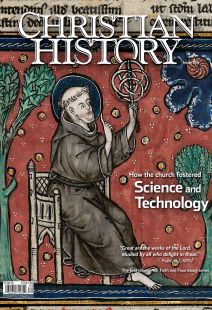Hannibal Goodwin Was a Pastor, Educator, and Far-Sighted Inventor
HANNIBAL GOODWIN was born on this day 30 April, 1822 in Taughannock Falls, New York. Although raised a Methodist, he was delighted with the first Episcopal service he attended and left law school to become a minister in the Episcopal Church. After graduation, he married and served in New Jersey towns. While at Trenton, he developed lung problems and moved to California for a change of climate. There he founded the first Episcopal church in Napa Valley, pastored in Maryville, and established a girls school in San Francisco.
Some years later, he returned to New Jersey, where he became the rector (clergyman) of the Episcopal House of Prayer in Newark. Teaching God’s word to children was his passion, and to that he owes his remembrance today.
Children would learn better, he thought, if they could visualize Bible scenes. He determined to produce images for a stereopticon (a projector that combines two slightly different images to create a three dimensional effect). At that time, glass plates were used for photography and the process was slow. Goodwin felt that a light and flexible material would work better, and so he began experimenting. He invented celluloid film rolls for photography as a result. George Eastman was a member of his congregation at the time and imitated the process for the Eastman-Kodak company.
At once people recognized the importance of Goodwin’s invention. However, Goodwin said, “Yes, my invention—but I don’t like to be called an inventor. A priest of the church is my title, and of that I am proud, and am glad to state that at the very time I happened to make this invention, I was exercising a certain feature of my ministerial profession.”
Goodwin would see little profit himself from the process. Indeed, he almost did not get credit for it, because for eleven years Eastman-Kodak blocked his patent while making large profits off the film themselves. The courts eventually ruled in Goodwin’s favor. Before he could go into production, however, he was injured in a street accident that fractured his leg and led to his death in 1900 through the complications that followed. His wife, Rebecca Allen Goodwin, received part of a $5 million settlement from the Eastman-Kodak company, but lived only one year to enjoy it.
In 1914, friends and grateful photographers joined together to erect a tablet that read, “His experiments culminated in 1887 in the invention of the photographic film. As a memorial to the inventor of the device that has proved so potent for the instruction and entertainment of mankind this tablet is erected.”
Among Goodwin’s other patents was a process for photographic printing. Although his film rolls led directly to an enormous photography business and to the rise of the movie industry, some major encyclopedias do not have entries for Hannibal Goodwin.
—Dan Graves
----- ----- -----
Christians have often been on the forefront of technological innovation. Christian History #134, How the church fostered science and technology






